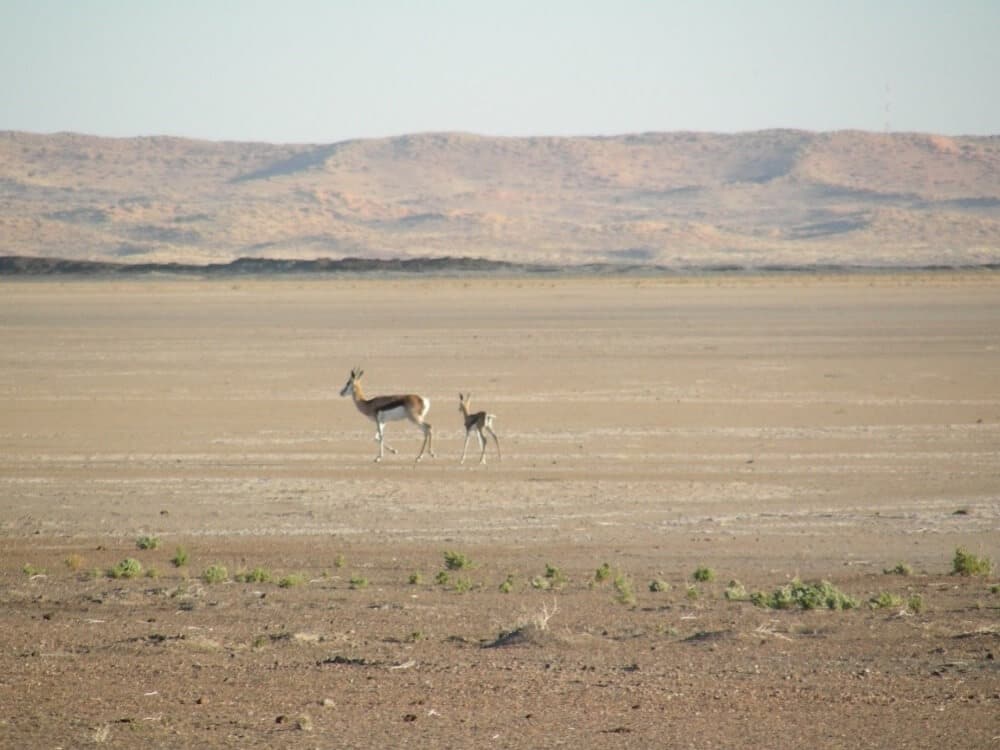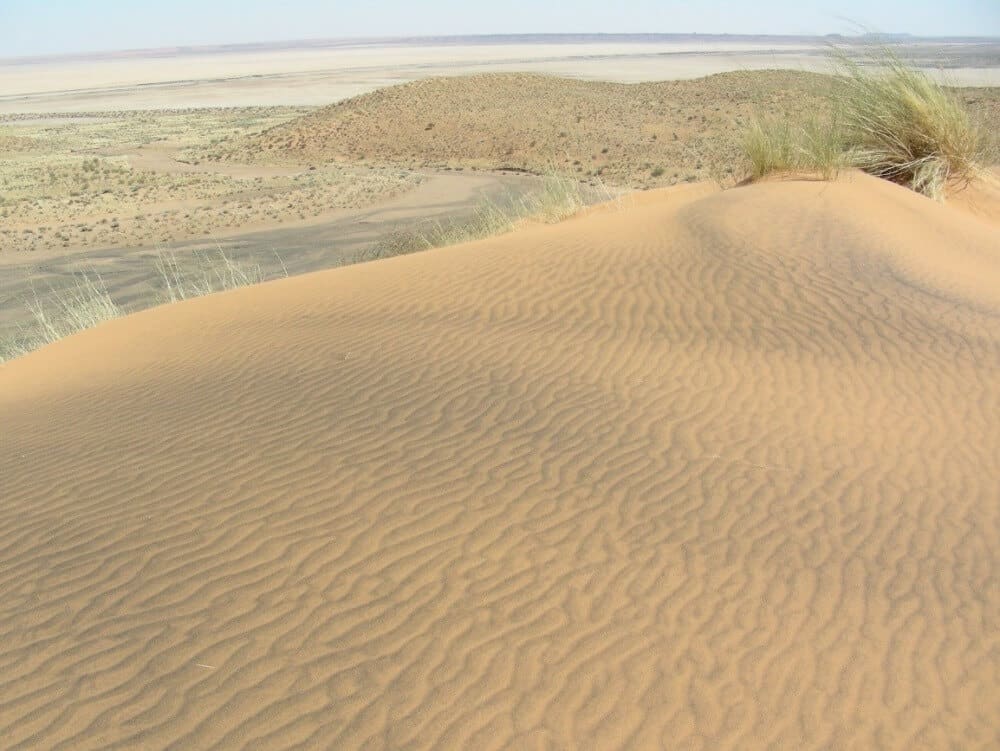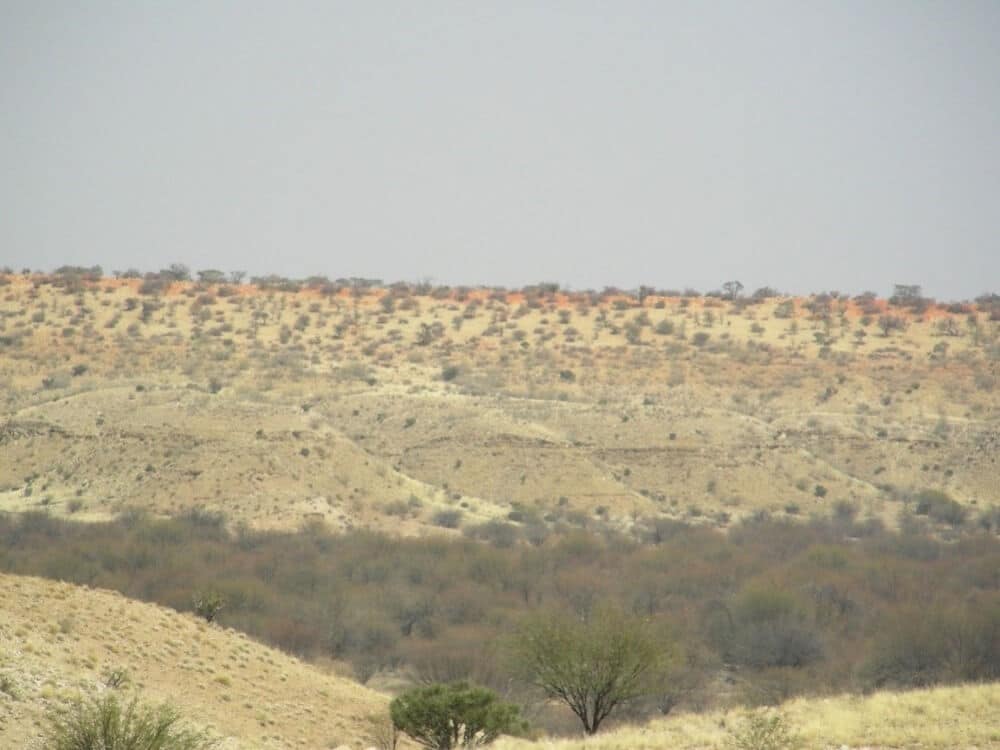In studies conducted using a new model, based on data measured in sands from the Kalahari Desert in Africa and the Simpson Desert in Australia, researchers were able to find that the ancient sands are broken up to date - at least several million years, and that the new method they created can be used for dating ancient deserts and learning the migration patterns of sands and their creation

Deserts and arid land areas are a central part of the Earth's continents, therefore they serve as an exclusive and unique archive of climatic and geological processes that occurred on land in the past. At the same time, the fact that more than 20% of these areas are covered with sand poses a significant challenge to researchers around the world in trying to determine the age at which the desert was formed. Limitations arising from the natural processes occurring in them, such as the recycling of the sediments in sand dunes, as well as from technological aspects involving the application of tools for geological dating, make it difficult to date the deserts and understand the long-term processes associated with them. At the same time, the accumulated information in the world's deserts can contribute to the way we understand natural processes such as climatic changes and the development of the landscape in arid terrestrial environments. In light of the need to date deserts, there is significant difficulty in dating aeolian landscapes such as dune fields.
As part of a study recently published in the scientific journal "Earth Surface Processes and Landscapes", combined Earth science researchers from the Hebrew University and the University of Lausanne in Switzerland, Dr. Yoav Ben Dor and Dr. Shlomi Weiner, Different methods used to date sediments and sedimentary rocks in the world, using an innovative model that simulates the movement of dunes in the desert under a wide range of environmental scenarios. Analysis of data from the Kalahari Desert in Africa and the Simpson Desert in Australia using the model illustrated that the desert sands are older than previously suggested, and that Their age is at least several million years.
Here it should be emphasized that Dr. Weiner began researching the sequence of sediments and sedimentary rocks that accumulated in the Kalahari Basin during the past millions of years as part of research for his PhD, which he completed about a year ago at the Hebrew University under the guidance of Prof. Ari Matmon and Prof. Yigal Aral. "The Kalahari Basin is a closed continental basin with unique natural phenomena," says Dr. Weiner, adding that "when I got there, I realized that deciphering the processes involved in shaping the landscape in the basin is a major challenge that will combine the use of various and diverse tools available to us at the Institute of Earth Sciences." After he began reading the existing literature and analyzing samples he brought from the Kalahari Basin, Dr. Weiner identified a "contradiction" between publications discussing the age of the desert and the data measured in the samples he collected. In particular, Dr. Weiner was surprised to discover that the existing dating of the Kalahari Desert was significantly younger than he calculated using data he measured using the particle accelerator in Aix-en-Provence, France. "My vision was to resolve the contradiction that apparently exists between dating based on luminescence, which is capable of reaching a range of up to hundreds of thousands of years, and dating using cosmogenic isotopes, which indicates that the Kalahari desert was formed at least a million years ago at the very least," he describes.

Dating using optical luminescence, OSL (optically stimulated luminescence), is one of the most common tools for dating geological sediments and is used to determine the amount of time that has passed since quartz grains were exposed to sunlight. Quartz grains are very common sediments carried by wind and water, and are therefore found in almost every environment. They can be found in sands, rocks, soils, the seashore and archaeological sites. The method makes it possible to date how long the quartz grains have been buried since their last exposure to sunlight. At the same time, the maximum amount of radiation that the grain can accumulate dictates the maximum age that can be dated with this method (up to a time span of about 300 thousand years in sand dunes).
A combination of dating methods
Alongside the use of luminescence-based methods (such as OSL), other dating methods have been developed based on the measurement of cosmogenic isotope concentrations (cosmogenic isotopes) formed in rocks and sediments, such as quartz grains. The cosmogenic isotopes that the researchers used are created when cosmic radiation hits the quartz grains, thus leading to the creation of another element within the crystal. In this way, oxygen atoms in the quartz crystal become isotopes of beryllium 10 (10Be), while atoms of silicon become isotopes of aluminum 26 (26Al). The concentration of these isotopes in the quartz grains is extremely small, so their concentration is measured using a particle accelerator after a complex process of cleaning and preparing the samples. Since these two isotopes are also radioactive, and actively decay, their concentration in the quartz grains directly depends on their rate of creation and rate of decay. In the conditions where the grains are on the surface, the rate of creation is high, and therefore their concentration increases, whereas when they are buried, the rate of their creation in the quartz grains fades and their concentration is small. Therefore, the concentration of the isotopes in the quartz grains allows researchers to calculate a simulated burial age of the dated sediments.
Why not use both methods together? "There is a certain difficulty in illustrating the integration between measurements from the world of luminescence (O.S.L.) and cosmogenic isotopes", According to Dr. Ben Dor, "Both methods are based on well-defined and well-understood physical processes, described through equations, and we have not found any publication in which their combination into a unified model was presented." Also, it is not possible to directly solve the way in which the migration of the sands affects the accumulation process of the cosmogenic isotopes in the quartz grains in the dune.
As a result, the researchers developed computer model which simulates the movement of grains in sand dunes. In the model, the grains move for tens of millions of years in a migrating dune, at rates calculated using the distribution of luminescence ages that characterize sand dunes. At the same time, the cosmogenic isotope concentrations and luminescence age are calculated for them under a wide range of environmental scenarios such as different weathering rates, different movement rates and dunes at different depths. After completing the simulations (About a million runs per sample!), the researchers used the results of the simulations in which the calculated cosmogenic isotope concentrations matched those measured in the sample using the particle accelerator for the purpose of determining the period of time that had passed since the beginning of the migration of the sand, thus arriving at the age of the desert sands.
In the end, the researchers were able to develop software that uses parallel computation to run many simulations, and allows the user to analyze the results efficiently. "We send the software, known as Cosmolian, from the combination of the words cosmogenic and aeolian, to the researchers who contact us," adds Dr. Ben Dor, "both the article and the software are accessible to everyone free of charge to allow them to analyze the results of their measurements in a similar way" . "We want to build a global database of simulations for the analysis of the dynamics of sand dunes," continues Dr. Weiner. "This way we will be able to identify patterns in the process of formation and migration of sand deserts derived from certain environmental conditions, and this will teach us how the landscape responded and will respond to climatic changes," he adds.

In studies conducted using measurements of sands from the Kalahari Desert in Africa and the Simpson Desert in Australia using the new model, the researchers did identify that the sands were formed at times when significant climatic changes are recorded in the area. The results show that sand began to accumulate in the southern continent of Africa in the time period between about 2.5 million and one million years before our time, while the sand desert in Australia began to develop already about 3.5 million years ago. The researchers suggest that this innovative method can be used for dating ancient deserts and learning the migration patterns of sands and their formation. These understandings have profound and far-reaching implications for how the response of landscape formations to changes in climatic and environmental conditions can be predicted.
More of the topic in Hayadan:
